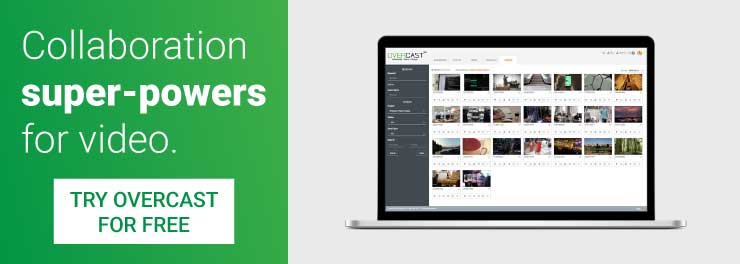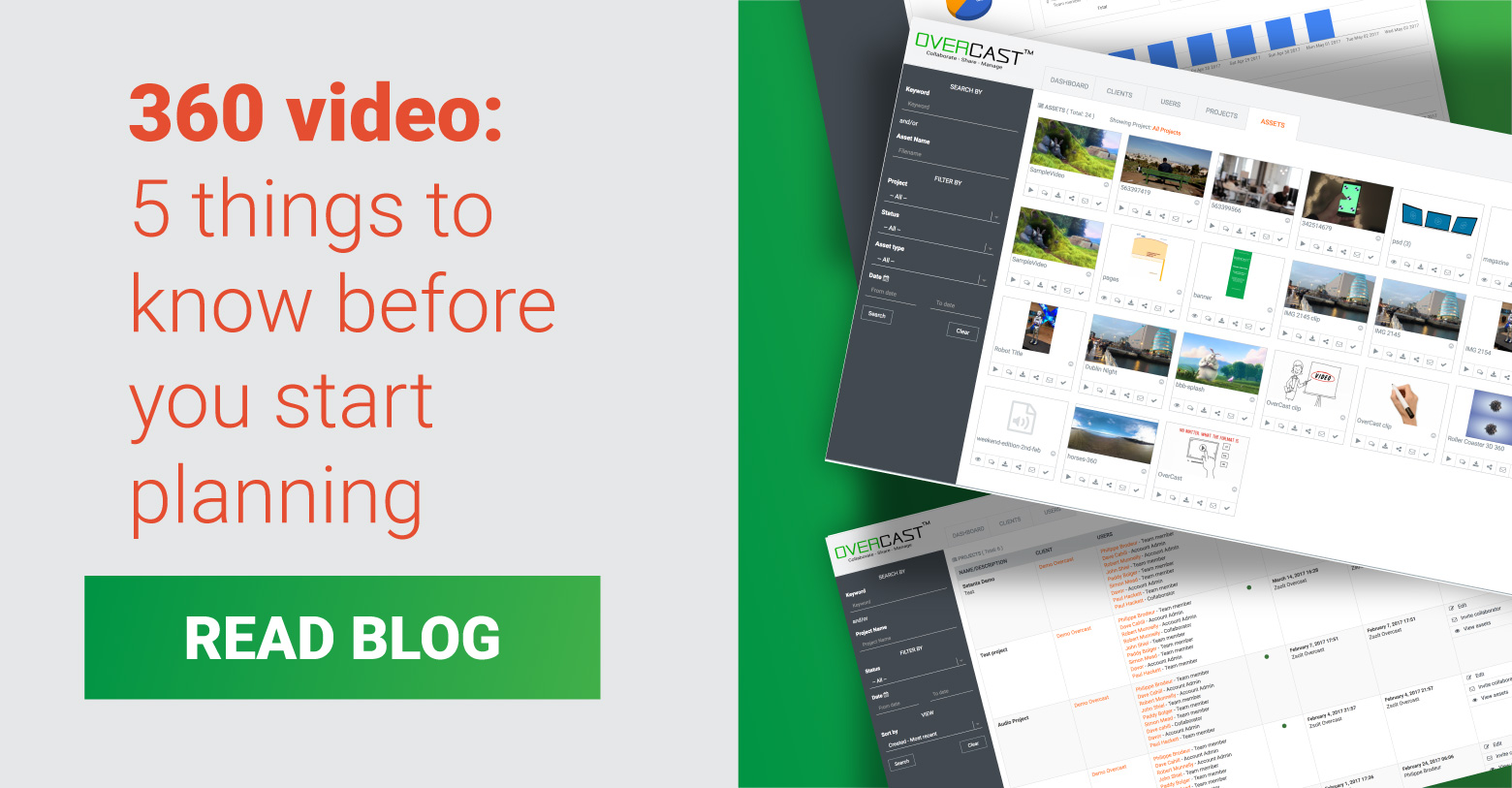360 Video | 5 Things To Know Before You Start Planning
360 video is a bit of a paradox. While some pundits love to group it in with augmented and virtual reality, others don’t. It’s all a bit confusing for the consumer (who probably doesn’t really care). However, for someone in the business of video, it is worth at least being clear about what we are talking about.
Tweet: 360 Video | 5 Things To Know Before You Start Planning
VR and AR deal with virtual worlds. That means those worlds need to be created. In order to experience true VR or AR you need to wear a headset. With 360 video, the majority of the content being created today can be viewed on phone, PC or TV – think rectangular screen.

When we discuss 360 videos, we mean filming our surroundings and then stitching the content to be viewed in a rectangular ratio. This differs to VR and AR where we are creating fictionalised worlds.
RTÉ announces partnership with Samsung around 360° video
Last week Ireland’s national broadcaster, RTÉ, announced that it has signed a partnership deal with Samsung for 360 degree cameras and VR headsets. They said that they aim to create more virtual reality and 360 degree content that will include more interactive coverage of concerts and sports events. They also said that content will include news, current affairs and sport for both online and TV.
Personally, I think it is a great move forward. But I must say that after talking to some of the people I know at the national broadcaster that there is more than a little confusion as to what kind of content they will be creating. It’s because they made the classic mistake of mixing “virtual” worlds with real world events that they plan to shoot in 360. Let’s put it down to someone in the PR department getting the most out of the buzzwords.
Regardless, there will be some successes and some failures and I hope the evangelists that they appoint take the bull by the horns and really work at creating some fantastic content. At the end of the day, you have to give them credit because the technology is still in its infancy and they are taking a chance to experiment with it.

5 pieces of advice about 360 video
1. How Will News Work?
We won’t need to film most news stories in 360. The reason is that they are traditionally linear stories and the grammar of news is to tell a story using interviewees and some general shots or sequences of shots from a relevant place. With 360, the camera is placed at the centre of what is going on and films everything around it. There is no good way to do close-ups to create empathy, a key ingredient of a news story.
2. Will it be more interesting?
Action needs to happen to make it interesting. So filming something like the parliament buildings or a street scene is, frankly, boring and irrelevant. Probably best off shooting something traditionally than working with 360 for traditional news stories.
3. How will sound work?
Sound is complicated. If you are going to put a camera at the centre of the action then you have to think through what sound are you going to gather. For someone who has worked with video technology for 25 years; I can tell you that sound has always played second fiddle to pictures when it comes to TV and video. Indeed, when cuts came in the 90s to pare back the news crews, the first jobs to go were the sound guys. But you forget sound at your peril. Think of it this way: if you had the option of watching a TV programme with pictures and really crackly sound or one with sound and fuzzy pictures – which would you watch? Studies have shown that good sound wins every time.
4. Where is the crew going to stand?
It might sound obvious, but with 360 video there is nowhere that the crew can stand unless it is set up in advance with the camera mounted somewhere (like on a drone) and the crew at a distance. This in itself precludes most stories that we know traditionally as news stories.
5. How will you tell a story?
You have to cast your net wide to find real creatives who can help develop new ways of storytelling. Simply going into the news and sports rooms and offering to train existing staff on 360 will not work. Of course, there is some technical overlap. But 360 storytelling is a completely different skill and we need to treat it as such.
Final Thought.
My suggestion for anyone delving into 360 videos would be to take time to look at the current landscape. Look at what others have achieved and what is possible. You should establish a well-defined strategy around goals and outcomes before delving into the world of 360. The technology is new and you can spend time, effort and resources on content focused on the technology rather than the subject. So be wary of jumping in without a plan in place.
Note: Overcast HQ supports the storage and transcoding and sharing of 360 video
